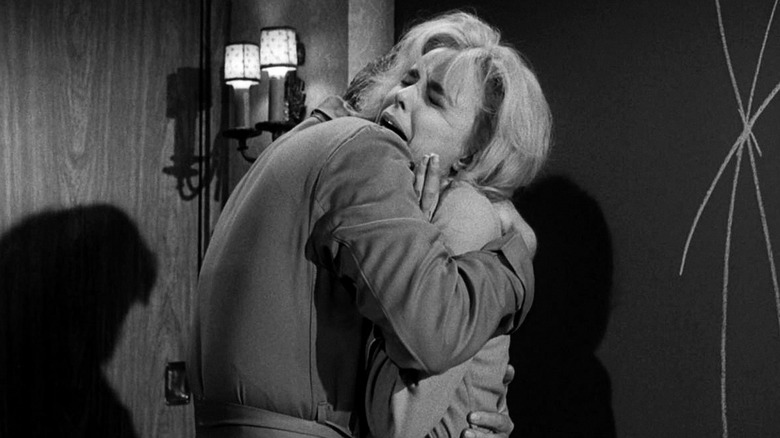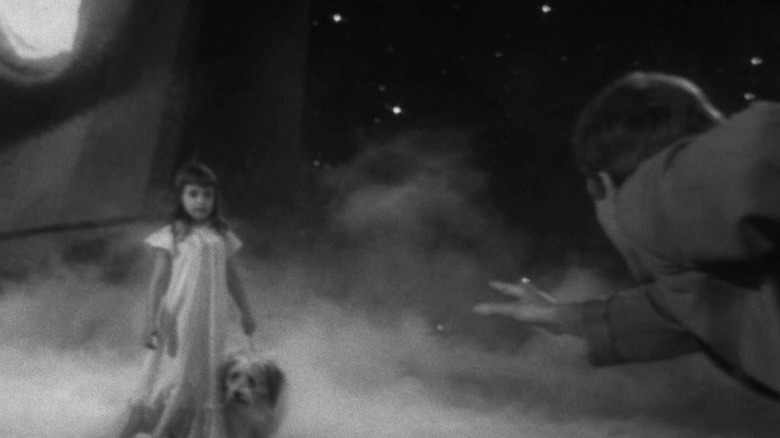A Terrifying Twilight Zone Episode Was Inspired By A Writer's Real-Life Incident
"The Twilight Zone" episode "Little Girl Lost" follows two suburban parents, Chris (Robert Sampson) and Ruth Miller (Sarah Robertson), who hear their young daughter Tina crying out in fear. When they go to her room, she's not there. With the help of physicist friend Bill (Charles Aidman), they discover a portal to the fourth dimension has opened in Tina's room and she's fallen through it. "Little Girl Lost" is the original "Coraline": a story about a young girl who crawls through a tunnel to a parallel dimension.
The episode mostly consists of the three adults standing huddled around Tina's room, calling to the invisible girl. When the fourth dimension is finally seen, it's rendered as an ethereal, fog-filled realm — the budget and constraints of '60s TV special effects wouldn't have permitted anything else.
"Little Girl Lost" is scary because it taps into a primal fear, that of losing one's child. The thoughy that your child could be snatched from the safety of their room also plays into more modern fears about child abduction. Throughout "Little Girl Lost," Chris and Ruth know what's happening to Tina, but she's out of their reach and they can't help her. Episode writer Richard Matheson knew that fear, and channeled it into his story.
Little Girl Lost is the Twilight Zone showing fears of a parent
Matheson was a prolific "Twilight Zone" writer, also responsible for other classic episodes like "Nightmare at 20,000 Feet," "The Invaders," and "Steel." Like some of his other episodes, "Little Girl Lost" was based on a short story he'd previously written. (Matheson was as much a prose writer as a screenwriter, penning the now famous post-apocalypse horror novel "I Am Legend.")
In "The Twilight Zone Companion" by Marc Scott Zicree, a quote from Matheson reveals the chilling real-life original inspiration for the story:
"That was based on an occurrence that happened to our daughter. She didn't go into the fourth dimension, but she cried one night and I went to where she was and couldn't find her anywhere. I couldn't find her on the bed, I couldn't find her on the ground. She had fallen off and rolled all the way under the bed against the wall. At first, even when I felt under the bed, I couldn't reach her. It was bizarre, and that's where I got the idea."
Note how in "Little Girl Lost," Chris first assumes Tina is hiding under her bed before realizing she's not there either.
So from there, Matheson wrote "Little Girl Lost" in 1953 (aping the apt title of a William Blake poem), then a decade later revived the idea for "The Twilight Zone." He was satisfied with the results, praising Aidman's performance and the work of director Paul Stewart in "The Twilight Zone Companion." Matheson's sole critique was "the fourth dimension could've been a little stranger." That and the episode's bottled setting give away how it began as a short story, but "Little Girl Lost" made the jump to TV as well as could be expected.

